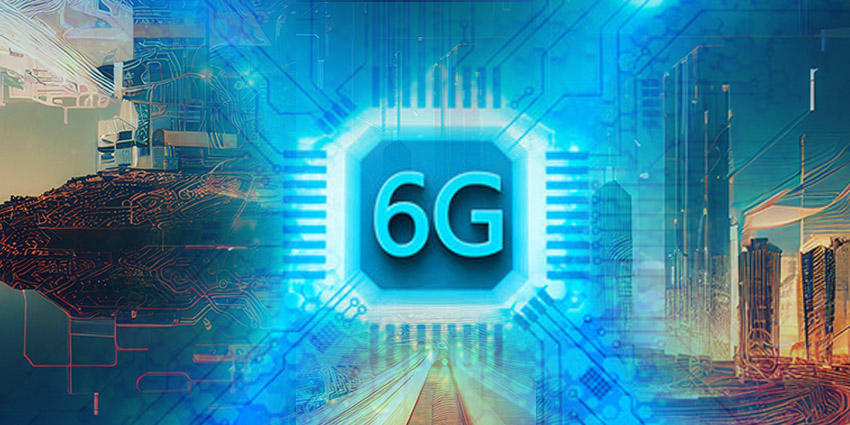Delivering immersive XR experiences requires a significant amount of data, and bandwidth. Any lag in the transmission of content between a software solution and a piece of hardware can lead to a jittery, uncomfortable, and unimpressive result.
That’s why so many XR innovators have already begun infusing their technology with 5G – the fastest mobile connectivity solution available in the current market. Most experts agree 5G connections can help to reduce latency, and boost the realism of immersive experiences. However, 5G may not be enough to deliver the true next-generation XR experiences users are looking for.
To unlock the kind of connectivity we’d need to create lifelike holograms, and multi-sensory experiences, we need a whole new generation of network technology: 6G. While exploring 6G environments might seem a little pre-emptive in a world where 5G has yet to achieve global adoption, many XR-ready network carriers are already going all-in.
The Growing Interest in 6G Technology
Discussions on the benefits of the “6th generation of wireless technology” for extended reality have been underway for a while now. Head of Samsung Research, Sebastian Seung, said in May 2022 that he believes 6G is essential to advancing the hyperconnectivity possibilities introduced by 5G, and unlocking new opportunities for extended reality, digital replicas, and holograms.
Samsung even launched its new “6G Research Group” in October 2022, based on Seung’s belief that the mobile devices of tomorrow would be fundamentally changed by the benefits of 6G. Samsung is also part of a new alliance featuring a number of technology vendors and network carriers.
The “Next G Alliance” introduced in 2022 was designed with a focus on accelerating research into the 6G landscape, and discovering new possibilities for networks.
The Next G Alliance includes a number of valuable members, including the four largest US mobile carriers, such as T-Mobile, Verizon, US. Cellular, and AT&T, as well as heavy-hitting brands like Meta, Microsoft, and Qulacomm.
The Next G Alliance aims to bring a host of different network carriers, telecommunications companies and technology innovators together to develop new standards, technologies, and strategies for introducing 6G networks to the wider world.
Which Other Carriers are Exploring 6G Technology?
Other network carriers have also showed their interest in the potential of 6G in recent years. Market-leading telecommunications company, Ericsson, announced its plans to build a new 6G research facility in November 2022. The company said it expects 6G to start taking off in the 2030s, and introducing new innovations for network security, green efficiency, AI, and XR.
Ericsson even released a statement rallying other network carriers to support the development of connectivity technologies for the XR landscape. The brand believes networking innovations could tackle existing challenges to current XR experiences, such as data offloading.
Deutsche Telekom also highlighted its interest in the 6G landscape during November 2022, with the launch of the new German “NeXt” (Native Extensions for XR Technologies) research project. This project will focus on developing scalable new solutions for the XR environment, based on the introduction of new technologies, software, and network connection opportunities.
We’re likely to see even more companies getting involved with the 6G landscape in the months to come, as government groups introduce new funding grants for pioneering brands. For instance, the UK government is now offering investments of up to £25 million to fund research and development of both 5G and 6G technologies.
What Will 6G Really Do for XR?
In the last couple of years, companies have already begun to see examples of how low-latency connectivity solutions such as 5G can enhance the XR environment. 5G connections in the extended reality space allow people to enjoy more immersive, engaging virtual and augmented experiences in real-time, without the risk of lag, or overwhelming bandwidth demands.
Experts believe 6G will take the benefits 5G is already offering to the XR world to the next level. At present, it’s difficult to know exactly what 6G will entail as a technology, as there are no official “standards” in place. 6G is just a concept, and market leaders have yet to release any clear information on what kind of speeds and performance levels it might achieve.
We do know some experts in the 6G market have said they’re planning on aiming for a latency of less than 1ms. If results like this are achieved with 6G, then we could easily see an XR future where smart glasses and headsets are able to transmit and receive data almost instantaneously.
With 6G, it will be possible to transmit an even higher amount of data between devices in the XR environment at a phenomenal rate. This could empower companies to leverage the benefits of multi-sensory experiences which simultaneously engage our sense of sight, smell, and touch.
The 6G network could also make XR more accessible to businesses on a massive scale, by allowing them to create XR interactions with minimal demands for power consumption and bandwidth. 6G could also assist companies with leveraging the benefits of edge-based cloud computing for XR environments. This could help with the creation of powerful networks specifically designed to promote extended reality experiences.
Is 6G The Future of XR?
Just like 5G, 6G promises companies, innovators, and developers access to a new generation of wireless connectivity. Although it’s difficult to know exactly what 6G networks will offer the XR space, there’s already a lot of excitement surrounding this area.
Network carriers are constantly seeking out new ways to deliver faster, more efficient connectivity experiences, and 6G could definitely help with this. Plus, it holds phenomenal potential for the new age of XR, inspired by the metaverse, advanced digital experiences, and ever-evolving headsets and technologies. There’s no doubt we’ll see more network carriers, technology pioneers, and telecommunication companies investing in the 6G environment in the months and years to come.







